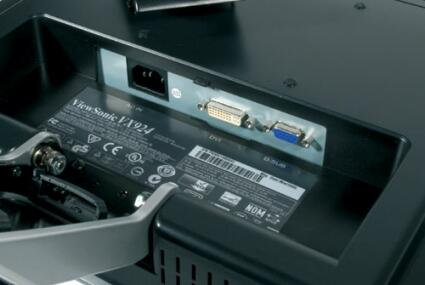ViewSonic VX924: The Near Future Of LCD Displays
Clean And Efficient
If you're a regular reader, you'll notice that the VX924 is a copy of the VX715, which we tested a while back. Though entirely made of plastic parts, the VX924 has a clean, elegant design. The materials used are of good quality, and for better stability, the base is metal covered with a silver plastic plate. The VX924 has a cover on the rear for hiding the connectors. Cables are routed through a cable holder camouflaged in the unit's base. It's a good-looking, nicely finished unit, which is what we've come to expect from ViewSonic.
Ergonomics
The VX924 has acceptable ergonomics. The buttons on the front panel are easy to access, with shortcuts for the brightness and contrast. On the other hand - and this is a maddening issue with ViewSonic - the adjustment cursors still aren't graduated in percentage units, so it's hard to go back to an earlier setting without counting the number of clicks. That's a real pain for us testers, though maybe a little less of one for you users. Still, since it doesn't cost anything to do, it would be awfully nice for ViewSonic to make a little effort here.
Physically, the panel has a tilt adjustment with a limited range. Fortunately, the height of the panel is well chosen to offer a comfortable working position.
The Basics
The VX924 has dual VGA/DVI connectivity and a built-in transformer. That's all, but it's enough. DVI is a welcome inclusion, since the tests in VGA mode showed that the picture was a little less sharp using that input, as we'll see later.
The VX924 is nicely finished and sufficiently well equipped for standard uses. Now let's look at its performance.
Get Tom's Hardware's best news and in-depth reviews, straight to your inbox.
